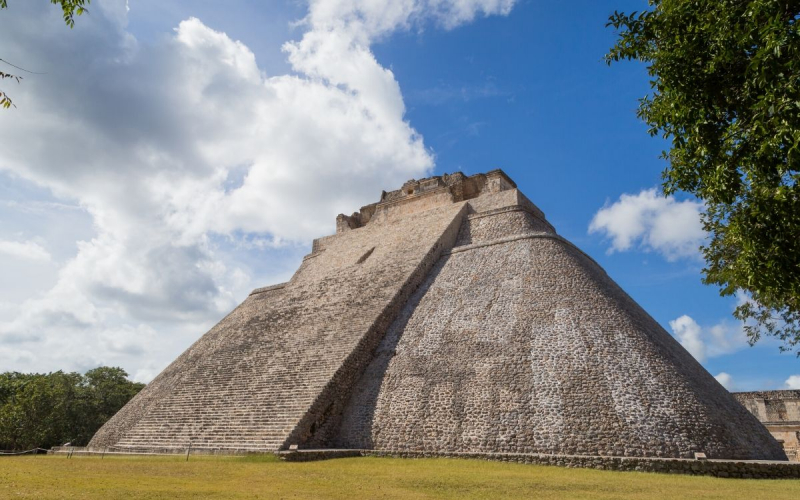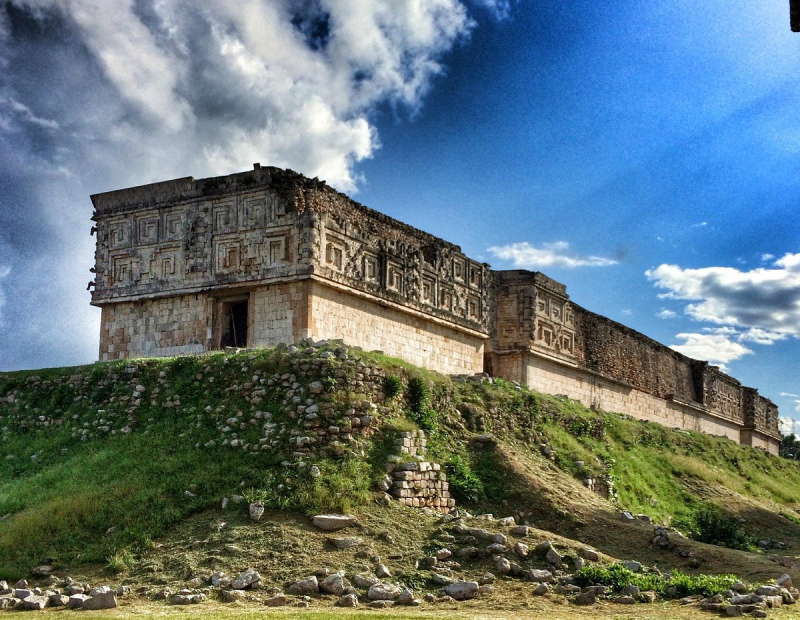Uxmal

Although the majority of the buildings and structures still standing at Uxmal were built between roughly 700 AD and 1000 AD, the remnants of a Maya town considered to have been inhabited as early as 800 BC may be found there. It is regarded as one of the most stunning Mayan sites and was in remarkably good shape when it was discovered during a 19th-century excavation.
Uxmal, which literally translates to "thrice built," was really built five times. It was first occupied around 600 AD, and given how dry the region is, it is another example of the outstanding Maya engineering talents. The architecture is renowned for its elaborate ornamental patterns, consistent usage of images related to the rain god Chaac, and even proportions.
At its height, Uxmal had a population of about 25,000 people, was a wealthy city and a religious center with important ceremonial significance, and ruled over neighboring cities in the Puuc hills. If you can, go early or late because the location can get busy. There will be plenty of climbing on pyramids, so bring sturdy footwear. The views from the top are fantastic. You're better off bringing your own food and drink unless you're willing to pay for what's on sale on-site because there aren't many beverages available there. Additionally, a small museum houses some of the Uxmal archaeological artifacts.
Location: San Isidro, Yucatan, Mexico











